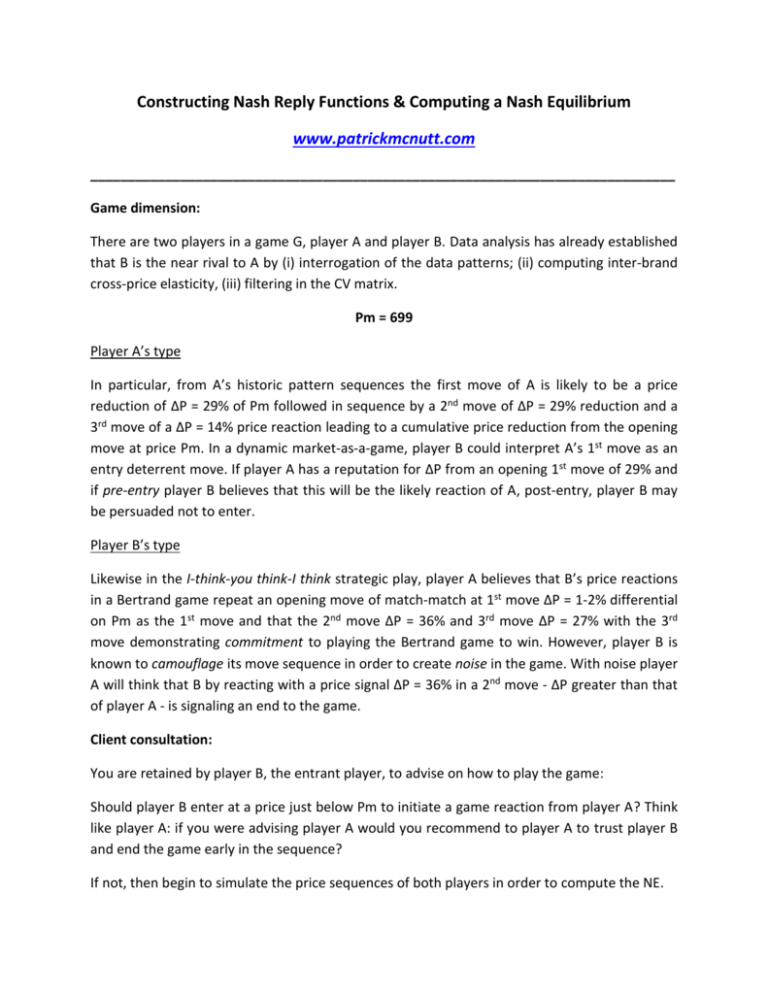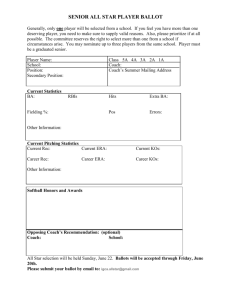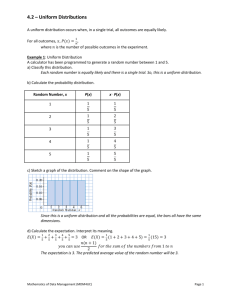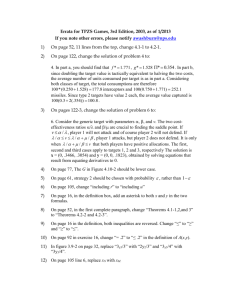PriceGamePMcN - EconIssues – Patrick A McNutt
advertisement

Constructing Nash Reply Functions & Computing a Nash Equilibrium www.patrickmcnutt.com ______________________________________________________________________________ Game dimension: There are two players in a game G, player A and player B. Data analysis has already established that B is the near rival to A by (i) interrogation of the data patterns; (ii) computing inter-brand cross-price elasticity, (iii) filtering in the CV matrix. Pm = 699 Player A’s type In particular, from A’s historic pattern sequences the first move of A is likely to be a price reduction of ΔP = 29% of Pm followed in sequence by a 2nd move of ΔP = 29% reduction and a 3rd move of a ΔP = 14% price reaction leading to a cumulative price reduction from the opening move at price Pm. In a dynamic market-as-a-game, player B could interpret A’s 1st move as an entry deterrent move. If player A has a reputation for ΔP from an opening 1st move of 29% and if pre-entry player B believes that this will be the likely reaction of A, post-entry, player B may be persuaded not to enter. Player B’s type Likewise in the I-think-you think-I think strategic play, player A believes that B’s price reactions in a Bertrand game repeat an opening move of match-match at 1st move ΔP = 1-2% differential on Pm as the 1st move and that the 2nd move ΔP = 36% and 3rd move ΔP = 27% with the 3rd move demonstrating commitment to playing the Bertrand game to win. However, player B is known to camouflage its move sequence in order to create noise in the game. With noise player A will think that B by reacting with a price signal ΔP = 36% in a 2nd move - ΔP greater than that of player A - is signaling an end to the game. Client consultation: You are retained by player B, the entrant player, to advise on how to play the game: Should player B enter at a price just below Pm to initiate a game reaction from player A? Think like player A: if you were advising player A would you recommend to player A to trust player B and end the game early in the sequence? If not, then begin to simulate the price sequences of both players in order to compute the NE. Class Exercise: The sequence of player moves in this Bertrand price game is as flows: player B enters at the initial move of match-match and triggers a price reaction from A: A B A B A B A B NE Pm = B 1st move A 1st move B 2nd move A 2nd move B 3rd move A 3rd move B 4th move 699 A 4th move B 5th move CVA ≠ 0 START END This allows you to compute the NE price and to advise the client to enter at the NE price v a price signal in the neighborhood of Pm to end the game before NE and signal to play Cournot. Additional information on player type is required: Player A is not a Stackelberg leader in this game but has a reputation for using a fighting ship if threatened by a price competitor. Player B is a de novo entrant but continues to camouflage its reserve capacity. With information on player type and with the information on likely price sequences proceed to chart the likely Nash reply functions. Player A is an incumbent type and B is a de novo entrant type. 1. Allow for a total of 8 moves in the T/3 simulation game; 2. Allow for a NE to be reached at the 8th move. 3. Player A’s opening price is Pm = 699, player A expects B to enter and player B will follow in the price sequence and both players have a CV of non-zero. 4. Allocate at least four moves per player in order to chart the Nash reply functions and construct the CTL and the game NE equilibrium. Ends//









